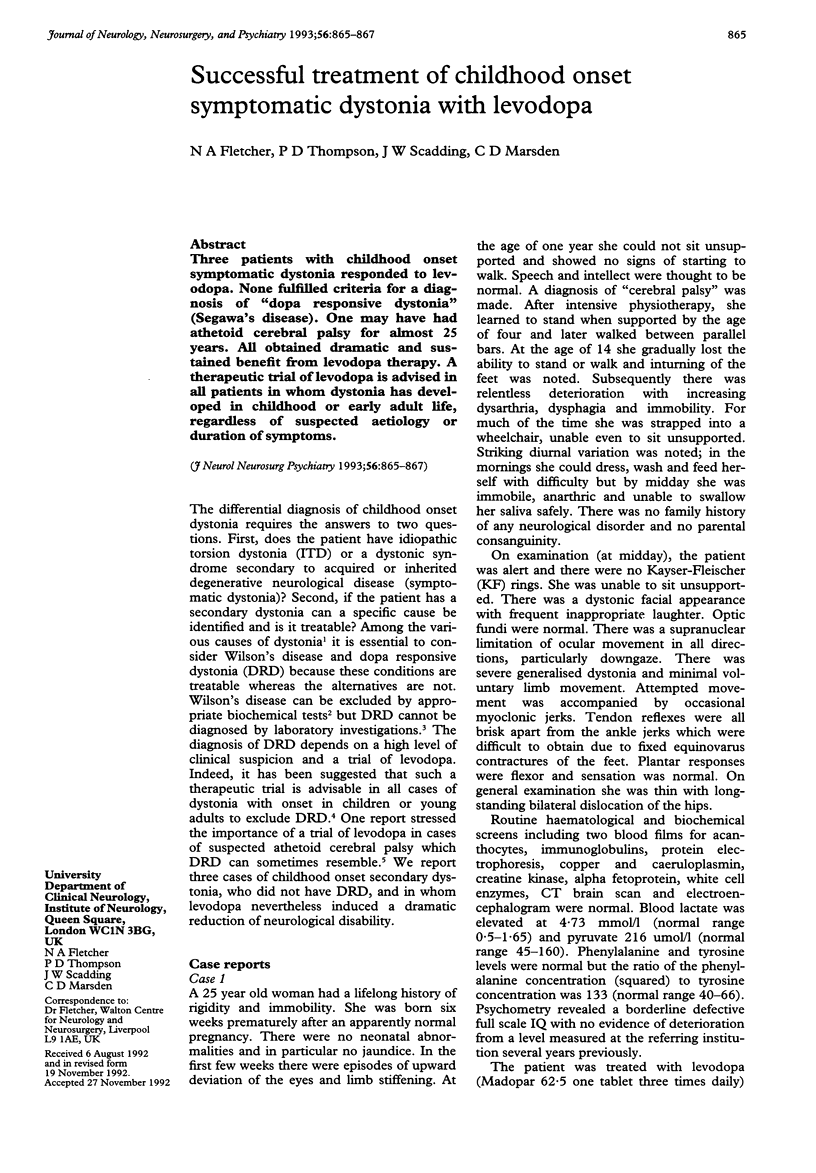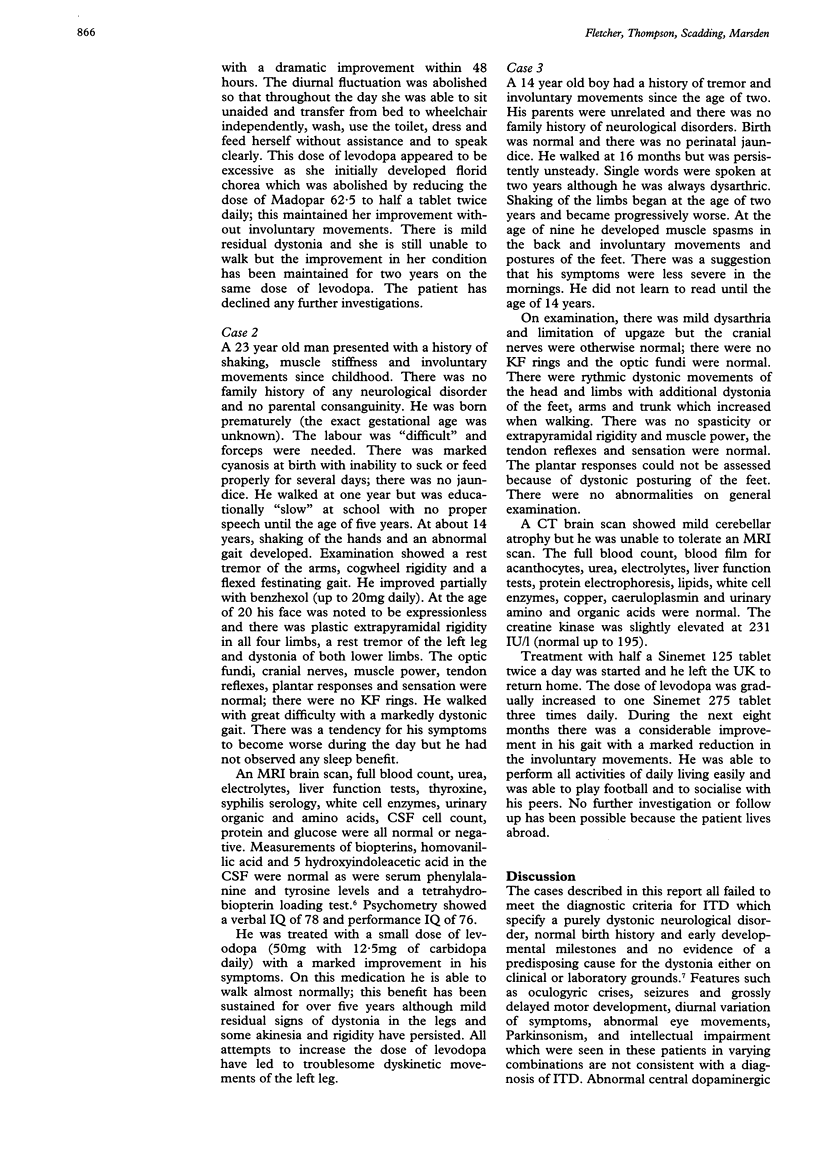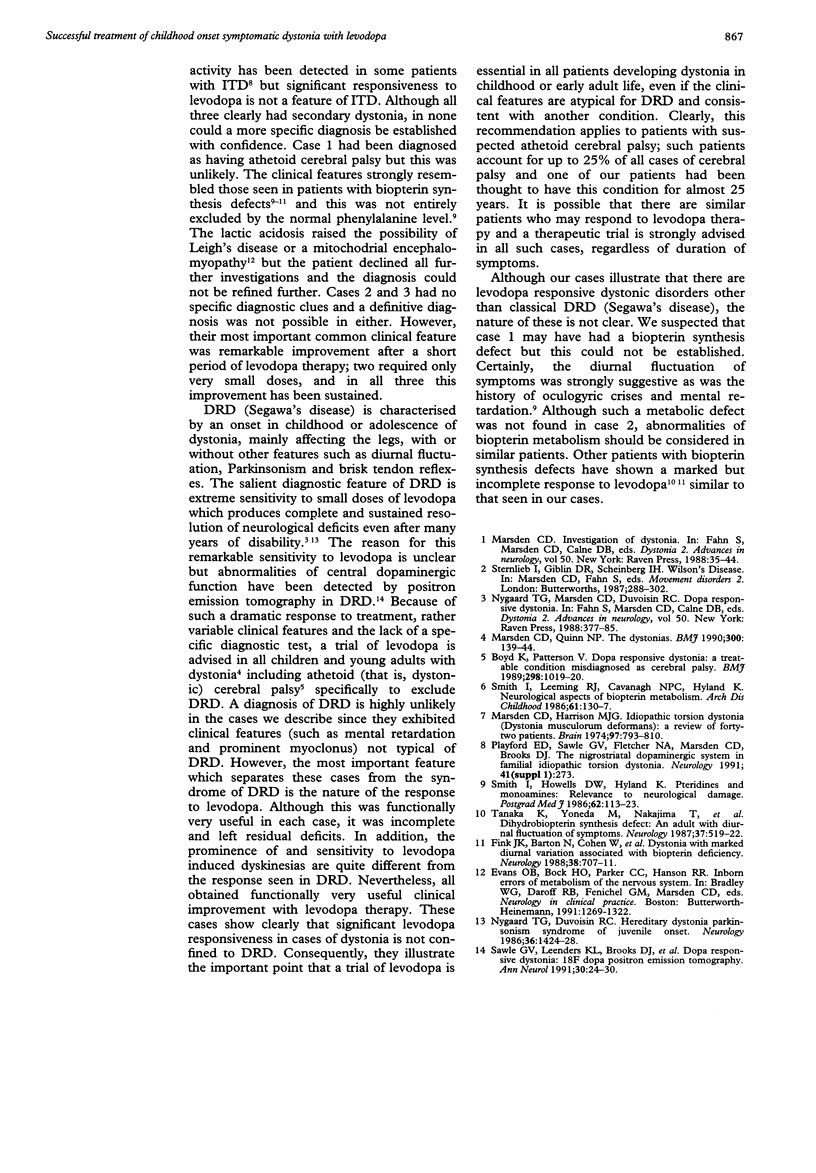Abstract
Three patients with childhood onset symptomatic dystonia responded to levodopa. None fulfilled criteria for a diagnosis of "dopa responsive dystonia" (Segawa's disease). One may have had athetoid cerebral palsy for almost 25 years. All obtained dramatic and sustained benefit from levodopa therapy. A therapeutic trial of levodopa is advised in all patients in whom dystonia has developed in childhood or early adult life, regardless of suspected aetiology or duration of symptoms.
Full text
PDF


Selected References
These references are in PubMed. This may not be the complete list of references from this article.
- Boyd K., Patterson V. Dopa responsive dystonia: a treatable condition misdiagnosed as cerebral palsy. BMJ. 1989 Apr 15;298(6679):1019–1020. doi: 10.1136/bmj.298.6679.1019. [DOI] [PMC free article] [PubMed] [Google Scholar]
- Fink J. K., Barton N., Cohen W., Lovenberg W., Burns R. S., Hallett M. Dystonia with marked diurnal variation associated with biopterin deficiency. Neurology. 1988 May;38(5):707–711. doi: 10.1212/wnl.38.5.707. [DOI] [PubMed] [Google Scholar]
- Marsden C. D., Harrison M. J. Idiopathic torsion dystonia (dystonia musculorum deformans). A review of forty-two patients. Brain. 1974 Dec;97(4):793–810. doi: 10.1093/brain/97.1.793. [DOI] [PubMed] [Google Scholar]
- Marsden C. D. Investigation of dystonia. Adv Neurol. 1988;50:35–44. [PubMed] [Google Scholar]
- Marsden C. D., Quinn N. P. The dystonias. BMJ. 1990 Jan 20;300(6718):139–144. doi: 10.1136/bmj.300.6718.139. [DOI] [PMC free article] [PubMed] [Google Scholar]
- Nygaard T. G., Duvoisin R. C. Hereditary dystonia-parkinsonism syndrome of juvenile onset. Neurology. 1986 Nov;36(11):1424–1428. doi: 10.1212/wnl.36.11.1424. [DOI] [PubMed] [Google Scholar]
- Sawle G. V., Leenders K. L., Brooks D. J., Harwood G., Lees A. J., Frackowiak R. S., Marsden C. D. Dopa-responsive dystonia: [18F]dopa positron emission tomography. Ann Neurol. 1991 Jul;30(1):24–30. doi: 10.1002/ana.410300106. [DOI] [PubMed] [Google Scholar]
- Smith I., Howells D. W., Hyland K. Pteridines and mono-amines: relevance to neurological damage. Postgrad Med J. 1986 Feb;62(724):113–123. doi: 10.1136/pgmj.62.724.113. [DOI] [PMC free article] [PubMed] [Google Scholar]
- Tanaka K., Yoneda M., Nakajima T., Miyatake T., Owada M. Dihydrobiopterin synthesis defect: an adult with diurnal fluctuation of symptoms. Neurology. 1987 Mar;37(3):519–522. doi: 10.1212/wnl.37.3.519. [DOI] [PubMed] [Google Scholar]


